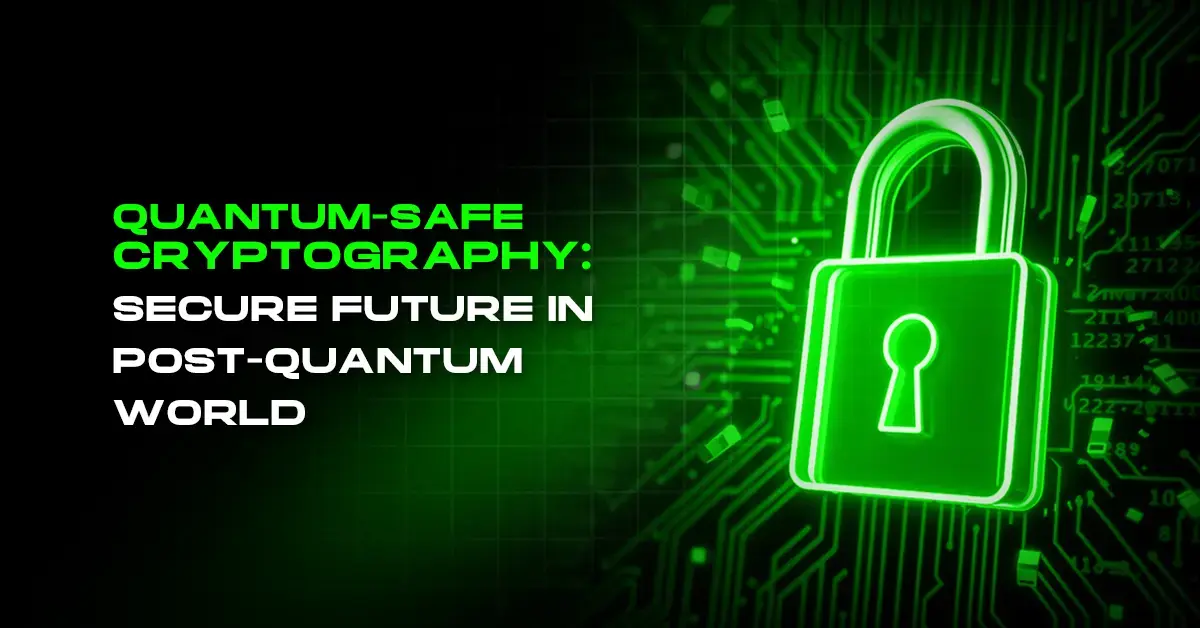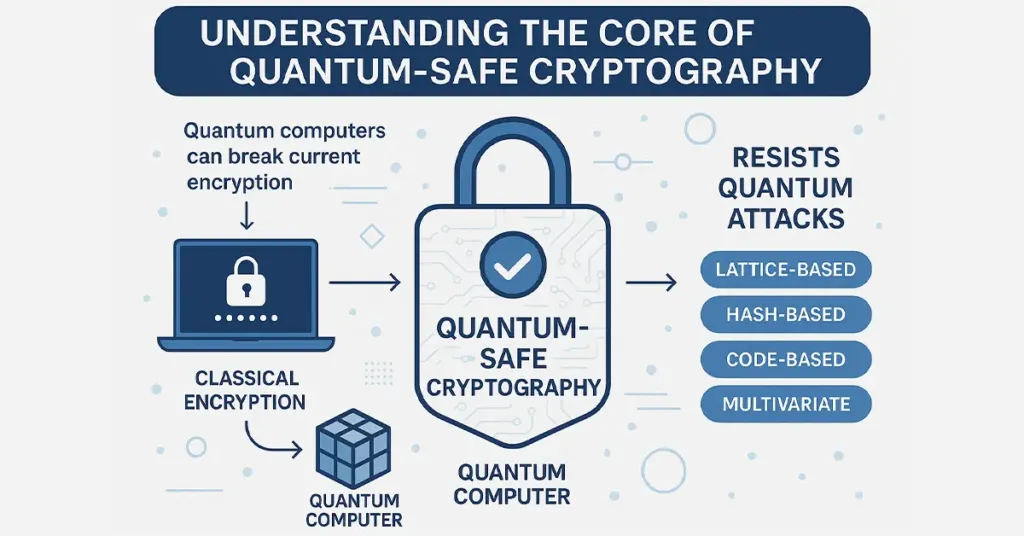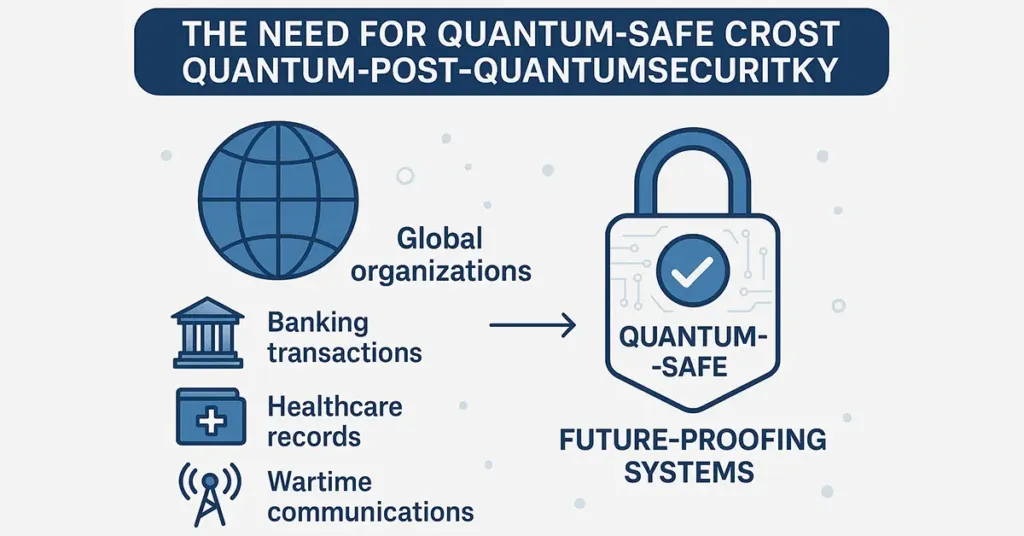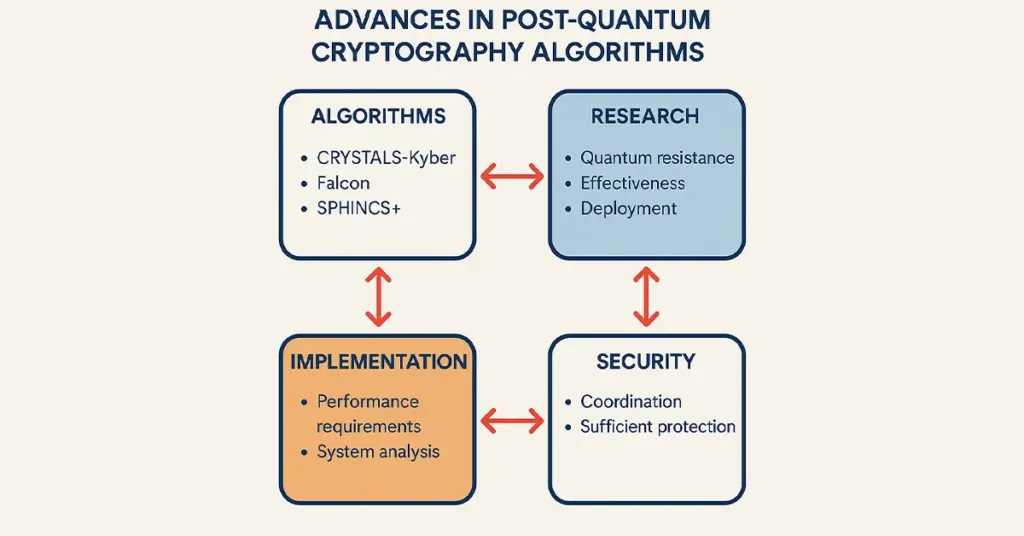Are we ready for the quantum computing revolution after all? With technology advancing at breakneck speeds, quantum computers keep revealing more and more fundamental flaws in our classical cryptography techniques. A vital antidote, Quantum-Safe Cryptography, provides strong protection against such impending attacks.
Because industries rely heavily on secure digital communications, they must urgently transition to encryption methods that can withstand quantum attacks. In this article, we’ll explain what it is, how it works, why it matters, and how it protects your digital future in a quantum-powered world.
Understanding the Core of Quantum-Safe Cryptography
Quantum-Safe Cryptography encompasses new-generation cryptographic protocols that resist extremely powerful quantum computer-based attacks. While current computers struggle to break complex math problems, quantum computers can break standard encryption methods like RSA and ECC within seconds. This groundbreaking capability forces cybersecurity experts to reassess plans for encryption.
Developers counter the threat by creating algorithms from problems that quantum computers are wasteful at solving. They include lattice-based, hash-based, code-based, and multivariate polynomial schemes. They all fortify digital security with long-term confidentiality and integrity, even in a future quantum-enabled world. As computing becomes quantum, embracing encryption that can withstand its might is no longer a technical necessity but also a strategic initiative to protect confidential data and provide confidence in digital systems.
The Need for Quantum-Safe Cryptography in Post Quantum Security
As post quantum security concerns mount, global organizations scramble to protect their sensitive information. These sensitive sectors, like banking transactions, healthcare records, and wartime communications, all depend on encryption methods that represent a future means of circumvention for quantum computers. Quantum-Safe Cryptography offers an anticipatory, proactive solution that operates to pre-empt and render powerless these future threats before they can harm.
Moving to this new-generation approach to encryption isn’t just a move to newer, more powerful technology; it’s future-proofing entire systems so that confidentiality and integrity are ensured in a quantum-enabled world. Governments and businesses need to begin incorporating these secure cryptographic techniques now to better safeguard against threats and have secure digital operations well into the next decade. Taking action early remains essential to enabling good post-quantum defense.
Building a Quantum Resistant Blockchain with Quantum-Safe Methods
Quantum attacks attack blockchains directly since such systems heavily depend on cryptographic signatures to make transactions and authenticate identities. To protect against this kind of threat, developers implement quantum resistant blockchain by incorporating Quantum-Safe Cryptography into their fundamental architecture directly. Adopting quantum-resistant algorithms, such blockchains maintain key properties such as data integrity, immutability, and decentralization even against highly capable quantum attackers.
Prominent blockchain initiatives dynamically explore and apply Quantum-Safe Cryptography best practices to secure digital signatures, hash functions, and consensus algorithms from hypothetical quantum attacks in the future. As the risk of quantum computing evolution persists, securing decentralized financial ecosystems and other blockchain solutions has emerged as a necessity for developers and organizations. These practices ensure blockchain technology is safe and robust after quantum, with users’ assets and data secured from new quantum attacks.
Advances in Post-Quantum Cryptography Algorithms
Advancements made by researchers in post-quantum cryptography are helping move the technology towards putting it into practice safely. Currently, CRYSTALS-Kyber, Falcon, and SPHINCS+ have a strong chance of adoption into the NIST Post-Quantum Cryptography Standardization process. Various tests by researchers look into the quantum resistance, effectiveness, and possible deployment of such algorithms.
Organizations face intimidating choices while implementing such new cryptographic algorithms, balancing performance and security requirements. System requirement analysis and infrastructure compatibility are two issues that must taken into consideration while choosing the algorithm. The developers and security teams have to coordinate with each other to ensure that the selected algorithms will offer sufficient security without introducing excessive disruption or overhead. These continuing developments in cryptographic algorithms provide a way forward for safe migration into the post-quantum era, and they help protect data and communications against quantum attacks in the future.
How Quantum Technology Challenges Traditional Security
Quantum technology introduces its game-changing abilities like superposition and entanglement that threaten mainstream security systems in their existence. With these abilities, quantum computers can handle and solve complex mathematical equations much faster than mainstream computers, making most mainstream security mechanisms out of date. Traditional public-key encryption is dependent largely on factoring large primes or discrete logarithms—schemes that quantum computers can do at high speeds, rendering such types of encryption useless in just seconds.
Such ability compromises the confidentiality and integrity of sensitive information within various industries, such as finance, health care, and government communications. In order to circumvent this difficulty, researchers and programmers have created new cryptography methods that are difficult to crack with the use of quantum computers.
Such new cryptography methods, known as Quantum-Safe Cryptography




Comments
Post a Comment